Usually when an Equestrian thinks of Pole work, it’s as an introduction to jumping. By getting the horse working happily over poles in the walk and trot and then canter, it provides the framework for the basis of Jumping. However, Pole Work has many more uses and benefits, which range from improving balance and rhythm in the horses stride, to improving length of stride, encouraging the horse to lower his head, lift his back and engage his hind quarter; to helping the horse recover and improve flexibility following injury. Here we explore some of the benefits of Pole Work for both you and your horse.
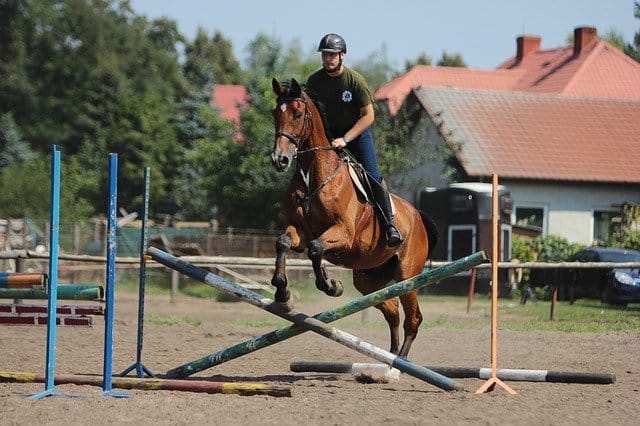
Benefits of Pole Work for Horses
1) Introduction to Jumping; Well there is no doubt that Pole work is a super introduction to jumping. Working the horse over poles on the ground in the walk and trot will improve his confidence. As he becomes more confident you can progress to working over the poles in canter, eventually introducing a small fence at the end of your line of poles.
2) Improves the Horses Rhythm: Working the horse over poles will improve his rhythm within his paces; as the poles are set out at even intervals it will encourage the horse to adopt a calm, even length of stride and rhythm, while discouraging rushing.
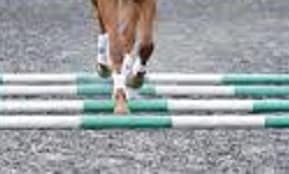
3) Encourages the Horse to lower his Head and Neck and Use his Back; As the horse works over poles, he will lower his head and neck and round his back. This helps him to develop the correct muscles to carry the rider and work correctly in an outline.
4) Improves the Horses Balance and Use of both his forelimbs and hind limbs. As the horse works over the poles he has to focus on what he is doing to correctly move over the poles, this improves both his flexibility and balance of both the forelimb and hindlimb.
5) Useful for Rehabilitation following Injury; Pole work is a excellent tool for use with the horse following Injury, as it can be done as in hand work. Getting the horse to walk over poles will encourage them to use their limbs at a very controlled pace, and this will help to restore their flexibility and Range of Motion following injury.
Benefits of Pole Work for the Rider
1) Introduction to Jumping; Again as for the horse, Polework is an excellent way to introduce the rider to Jumping. The rider can work both their flat and jumping position going over poles.
2) Improves the Riders Balance; Polework helps to improve the riders balance both on the flat and prior to jumping.
3) Teaches the Rider the importance of accuracy by riding straight up to, over and away from the poles.
4) Helps the Rider to Develop their Feel; When the horse works over poles it is generally more active with his limbs and lowering the head and neck while using their back, this gives the rider a great feel of what it is like to ride a horse with energy and impulsion in his paces.
5) A Great tool to help the Rider develop their eye for a stride; Working over canter poles is an excellent way to help the rider to develop their eye for a stride. By setting up different distances between canter poles, it will allow the rider to develop their eye as they count the strides between the poles.
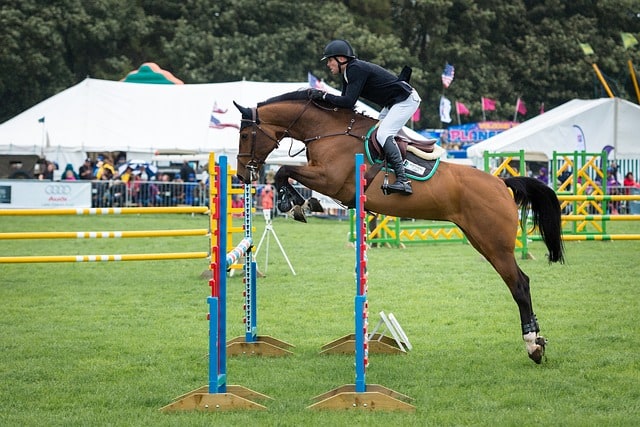
Working over Poles on the Ground
When first introducing the horse to Poles on the Ground, you should always start with one pole and then progress to 3 or 4, up to a maximum of about 6 to 8. The reason that you progress from 1 pole to 3 or 4 is to discourage the horse from jumping when there are just two poles close together.
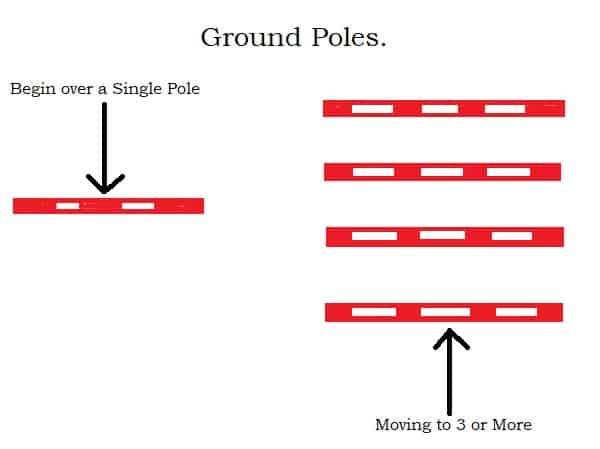
Polework is a fun way to encourage the animal to use themselves, so start off steadily, building up the number of poles as you progress and your horse gets stronger. For example it might be better to work a young horse over 3 or 4 poles, and not add any more until they get stronger, as if they get tired and stand on, or trip over a pole, they may lose confidence and set your training back a notch.
Spacing The Poles Correctly is very important, a good rule of thumb for a Horse standing about 16.1hh, is approximately 3ft to for walk, 4.5 ft for Trot and about 11.5 to 12ft for canter. **Remember this is just a guide, every horse is an individual.
Plus different surfaces can also affect the distances required for pole work; so begin slowly and adjust the distances as necessary to suit your horse. By starting off in walk this will give you and your horse a chance to get comfortable performing the exercises. If you are a new to using poles, perhaps ask your instructor to help you out on the first occasion so that you get started on the right foot.
As both you and your horse gain confidence you will be able to introduce some raised poles and perhaps progress to some cavaletti work and gymnastic jumping, all of which will provide great benefits to your horses, rhythm, balance and flexibility.
Pole Work for Rehabilitation Following Injury
When your horse is recovering from injury, it is a good idea to make use of Pole work, initially from the ground and then ridden. Pole work, particular raised poles will encourage the horse to engage the muscles of the Flexor Chain, (i.e. the muscles of the horses body that flex the neck, back and hip), helping the horse to strengthen their core, and stretch their neck and their back and flex their hip. The muscles of the Flexor Chain include Brachiocephalic, Sterno-Mandibular, Abdominal Muscles, Illiopsoas, Tensor Facia Lata, Quadriceps, and Digital Flexors.
Working over Raised poles also helps to tone the muscles of the thoracic sling of the horse, keeping it strong and flexible.
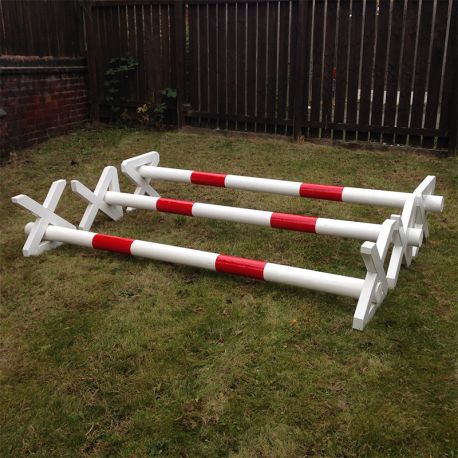
The thoracic sling has an important role in supporting for forehand of the horse, as there is no bony attachment in the horse for the forelimb to the thorax. The main muscles involved in the Thoracic Sling are Thoracic part of the Ventral Serrated Muscle, Cervical Part of the Ventral Serrated Muscle, Deep Cranial Pectoral, Transverse Pectoral and Descending Pectoral Muscles. Strengthening this area of the horse is important to the lightening of the forehand, and allowing the energy of the hind end to move through when the horse is in work and being ridden.
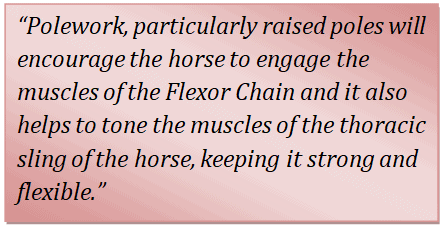
When I am working with a horse that is recovering, I always begin in hand, with a single pole, when the horse is working comfortably over this, I will then progress to 4 poles. For Rehab, the walk is fantastic, as the horse has to move each leg individually, and this therefore strengthens each limb. Progressing to raised poles as the horse begins to strengthen, you can raise one side of the pole alternatively using jumping blocks, and cavaletti are also useful for raised poles. If you ensure that you progress by using an even number of poles then you will be working both sides of the horse evenly.
As the horse becomes stronger and more confident, I have worked in walk over a single pole raised pole about 12 inches in height. This is a wonderful exercise for strengthening and working the Flexor Chain muscles and the Thoracic Sling as mentioned above, and is a great way to improve strength and flexibility for your horse.
Conclusion
Pole Work has so many benefits for both you and your horse; the best thing to do is to just get started. Start off at the walk with one pole and progress from there. If you are interested to discover more, there are many books on Amazon, about the subject, or if you are still on the Fence about it, check out the Pole work Groups on Facebook where there are many Equestrians sharing their positive experiences using Pole work to help their horses.
This Article Was Originally Published in the June 2020 Issue of Irish Sport Horse Magazine.
